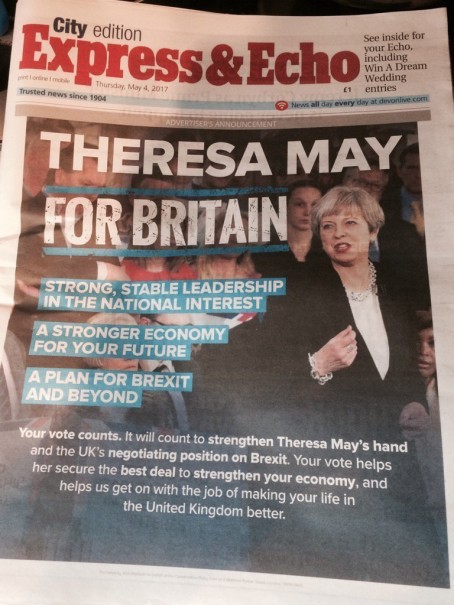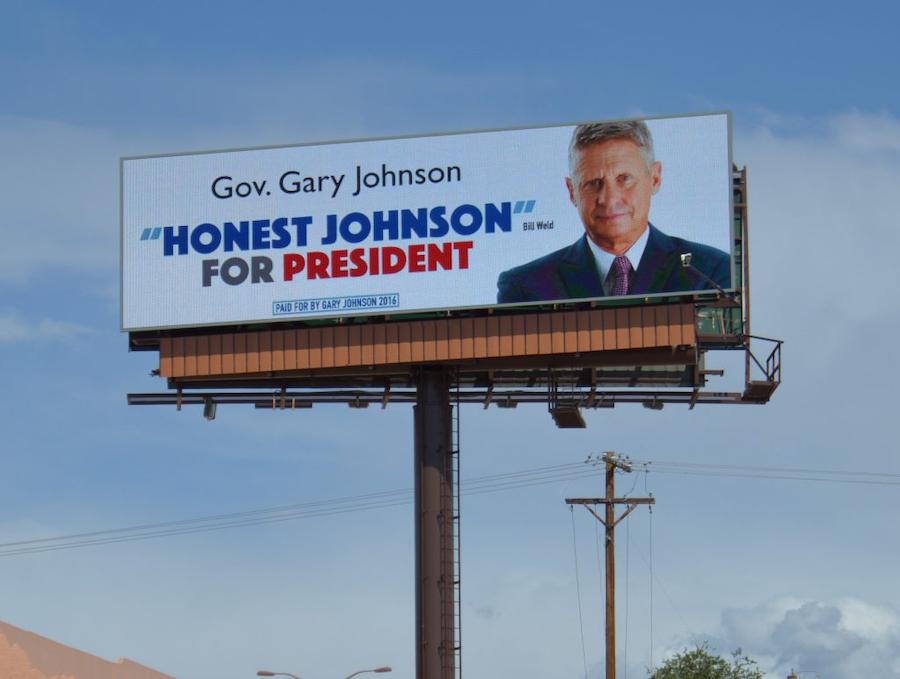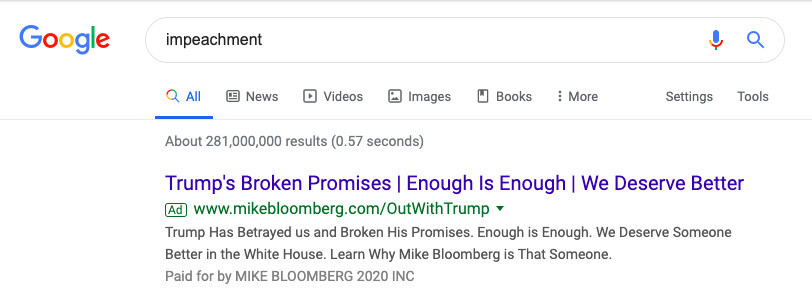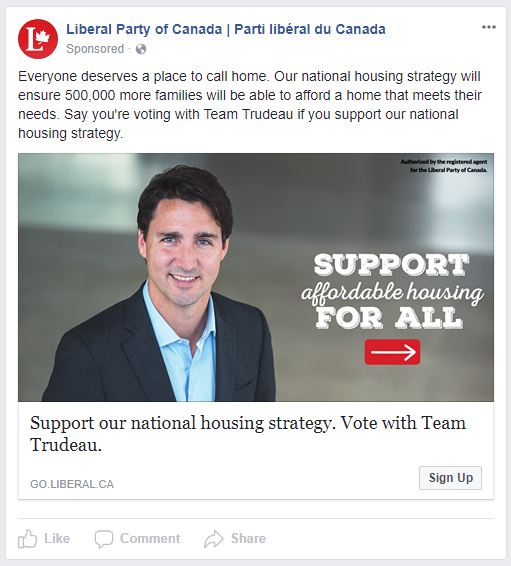How impactful do you think political advertising can be? Well, to give you an example, take a look at the “Daisy Girl” ad campaign, which was part of Lyndon B. Johnson’s 1964 re-election bid.
The ad ran only once during an NBC Broadcast but was powerful enough to paint his opponent, Barry Goldwater’s image as someone who would bring the world to the brink of a disaster.
The result: Johnson won the election with 90 percent of the electoral vote.
There’s no denying the fact that political ads if used right, have the power to flip elections.
However, we’ve come a long way from television ads. There’s a lot more to political advertising now than before.
Nevertheless, political advertising is one of the most effective political marketing techniques, and this post will cover everything that you need to know about political advertising.
The importance of political ads
A study by Michael Franz in 2010 experimented with political television advertising. He found that political ads shown throughout an election could increase a candidate’s vote share by 0.5 percentage points.
While this may seem like a small effect, it can make a significant difference in close elections. Also, keep in mind that this is just the effect of television ads. Add other advertising formats to the mix, and it would result in a significant margin.
The process of winning an election entails three major steps:
- People are introduced to a candidate
- They are provided with strong reasons to support the candidate
- Voters are driven to cast their ballot come election day
Political advertisements help you with all of these.
- 70% of voters are eager to learn about candidates and parties. However, they don’t actively seek out this information. Advertisements help you bring that information to them, thereby putting your candidate on their radar. If no one knows about your candidate, who do you think will come out to vote for them? It’s that simple.
- 63% of voters say that political advertisements remind them to seek out more information on the candidate. This, in turn, leads to them becoming more invested in your cause if you have strong narratives of the candidate in place.
- 15% of voters don’t show up because they feel that their vote doesn’t count, whereas 3% of voters claim that they forgot to vote. Advertisements aimed at getting out the vote tackle both these problems by being a constant reminder that their vote matters and reminding them to vote.
- 26% of people under the age of 30 are not interested in politics. The discourse conveyed through political ads helps you loop in these potential supporters by engaging them on a large scale.
Political advertising is a scalable way of communicating your political campaign message with the masses. It lays the groundwork for your other outreach efforts.
Imagine if you call a voter to persuade them to support you. If they don’t know anything about the candidate, the conversation will just go longer, which is something they may not appreciate. However, if your ads give them a picture beforehand, you can focus on the more critical part of the conversation.
Types of political advertising
Campaigners have to create multiple types of advertisements that meet different objectives. The five major types of political advertising campaigns that are critical for your candidate’s success are as follows.
1. Candidate introduction
Typically launched at the early phase of a race, introduction ads feature a candidate and his/her background. This type of ad is meant to draw the attention of party supporters and spread awareness about the candidate.
Here’s an example of Alexandria Ocasio-Cortez’s introduction ad when she was running against incumbent Joe Crowley.
To make the candidate introduction more impactful, some best practices to follow are:
- Highlight the candidate’s background and give strong reasons for why he/she is qualified to make decisions for the people. This is essential to gain the voter’s trust.
- Convey the candidate’s core values and convictions. People are more likely to support someone who shares similar values. This is a good opportunity to establish that connection.
2. Endorsement ad
An endorsement ad leverages an influencer (like a political figure or celebrity) to promote the candidate.
Endorsement ads add to the candidate’s credibility by leveraging people’s trust in the influencer. These ads are typically run a few weeks into the campaigning phase.
Here’s an example of Barack Obama endorsing Joe Biden for his presidential race in the 2020 elections.
To get the most out of these ads, here are a few things you can ensure:
- Select an influencer resonates with the audience you are targeting. For instance, a political influencer would be good for baby boomers, whereas celebrities or social media influencers would be more suitable for younger generations.
- Keep it candid. Make sure that the ad doesn’t sound very scripted. You have to make people believe that the influencer supports the candidate genuinely.
3. Positive candidate image ad
A typical positive image ad is used for voter persuasion by giving people strong reasons to vote for the candidate. These ads talk about their stance on various issues, the policy changes they hope to bring, etc. For incumbents, these ads are a way to highlight their achievements in previous terms.
Positive advertisements are also launched a few weeks into the campaign. Typically, these ads are also used to solicit donations or get people to sign up to email or SMS lists.
Donald Trump’s re-election campaign ad shown during the Super Bowl is a perfect example:
There are a couple of things you should ensure to make these positive ads more effective:
- Create the ad to instill positive emotions like hope, patriotism, pride, etc. You have to get people to relate these feelings with the candidate to inspire them to support him/her.
- Show the candidate in action: Preferably working and engaging with people. It’s critical to convey that the candidate is a people’s person who is ready to do the grunt work for the greater good.
4. Negative candidate image ad
Negative political advertising entails showing the opposition in a negative light. The objective is to induce doubt in the opposing candidate’s capabilities and reduce their support.
Negative ads are pushed out only if the candidate is behind and is losing most swing voters to the opposition. Sometimes negative ads are also run as a response to ads from the opposition. The “Daisy Girl” ad we spoke about at the beginning is an example of this.
Negative advertising doesn’t always have to be dark and serious, though. You could also make it fun and creative while conveying an important message. This could reduce the backlash for the negativity too, while getting your point across.
Here’s an example of a creative attack ad on Barack Obama run by the American Crossroads that features a James Bond themed narrative:
A few best practices that you can follow to create an effective negative campaign are:
- Leverage dark colors and strong visuals to induce emotions like fear, danger, doubt. Colors like black and red seem to work best for these.
- Talk about relevant issues. For instance, in the example above, the Iraq War was a huge debate polarizing the country, and the campaign made good use of it.
5. Citizen testimonial ad
Unlike an endorsement ad relying on celebrities to make a case for the candidate, citizen testimonials use common people to vouch for the candidate.
Testimonial ads are usually based on stories of the citizens’ struggles that can/are solved by the candidate. These ads portray citizens in difficult situations that the target voters can relate to and highlight the candidate’s importance by showcasing them as the hero.
Hillary Clinton released a series of testimonial ads during her 2016 campaign:
When creating testimonial ads, a few things you can do to maximize their impact are:
- Showcase the testimonial as a story. Stories are more memorable and bring out emotions better. These stick in the viewer’s mind, thereby relating the candidate to a positive feeling and increasing the chances of them supporting you.
- Create multiple testimonials with people in different situations. The more testimonials you have of people from varying situations, the more the chances of you connecting with a larger audience.
That being covered, let’s take a look at where you can put these ads out.
Political Advertising Channels
When the word political advertising is said, the first thing that comes to mind is television ads. While tv ads do take up a significant part of the advertising budget, campaigners leverage many more channels. These include:
Newspaper ads
Six in ten Americans read newspapers (print, online, or on mobiles) to stay up-to-date on political news, and newspaper ads can help mobilize these voters. Generally, campaigners publish positive and GOTV ads in newspapers.
Here’s an example:


The price of an ad depends on numerous factors like:
- Size of the ad (column, full page, half page)
- Color (Black & white or color)
- Placement (front page placements cost more than others)
- Circulation and reach of the newspaper (local ones cost lesser than national papers)
To give you an idea, a one-time, full-page color ad in The Wall Street Journal (reaching over a million people) can cost $354,823. A full-page ad in a regional edition of The New York Times can cost around $27,300.
Billboards/Posters
People are 70% more likely to remember something they see in print than online, which is why billboards and signages are still relevant. Plus, billboards are usually put up in high traffic areas (highways, cities) and can get a lot of attention.
Billboard and political campaign posters are usually used for positive ads and ads urging people to vote.


The cost for billboards factor in the following:
- Area or city where it’s located (high traffic cities will cost more than countrysides)
- Placement of the board (a freeway billboard will cost more than a countryside road)
- Average traffic volume of the area
- The number of people in each car (the advertisers typically have all this data)
For example, a New York City digital billboard in Times Square typically ranges from $10,000 to $22,000, and billboards in the SoHo District (Manhattan) can cost $18,000 to $30,000.
Brochures/flyers
Brochures or election flyers are print ads that are distributed (than placed, unlike billboards) and have lesser impressions. These brochures are usually dropped off at people’s doorsteps or distributed by people at local businesses.
Brochures are generally used for introduction, positive, and citizen testimonial ads.


The costs of political brochure ads depend on:
- The dimensions and size of the brochure (multi-page brochures cost more than single page flyer)
- Quality of the paper used
- The volume of brochures printed (higher volumes could cost less per page)
- Distribution (applicable only if you hire a distribution company)
The average cost of printing 5000 brochures (two sides of a single page) can range between $500-600 while the distribution can cost you an additional $500. You can cut that cost by having your volunteers do it.
Radio
Nearly 91% of Americans still listen to the radio every week, making it prime real estate for election advertising.
Radio ads are a more cost-effective alternative to television ads and hence perfect for smaller campaigns. These ads are generally used for positive, negative, and endorsement ads.
https://edition.cnn.com/videos/politics/2015/11/05/donald-trump-first-radio-ads-sot-nr.cnn
The cost of a radio ad usually depends on the following factors:
- The station you choose (national stations cost more than local ones)
- Time of day (prime times like in the morning when people commute cost more)
- The number of times the ad is played
- The location where the ad is broadcasted (cities with more listeners cost higher)
A 30-second ad played once in Salt Lake City can cost around $99, whereas one played in Chicago may come up to $360.
Television ads
Television is the most popular advertising channel for political ads, primarily because of the high viewership. Plus, the ads can be supported by powerful imagery for a better impact.
Television ads are used for negative, positive, introductory, endorsement, and testimonial ads.
TV ads are very expensive, and these costs usually depend on:
- The location where the ad is played
- The network and show in between which you wish to show the ad
- The type of station (local stations are cheaper)
- Time of the day
- Competition for ads from others (ads generally cost more during the election season)
Advertisers can expect to pay a minimum of $5 per 1,000 viewers for a 30-second commercial for local television stations. A 30-second spot broadcasted on a national TV can average around $115,000.
Digital and Social media advertising
The internet and social media have expanded the scope of political advertising. People spend over six hours of their day online on average, and a big chunk of this is spent on social media.
Plus, advertisers have a range of formats they can select for online advertising. A few of these include:
- Search advertising on Google (text ads appearing for specific search phrases)
- Video advertising on YouTube (ads playing before videos)
- Display advertising on Google and partner websites (banner ads on specific sites)
- Video and sponsored post ads on Facebook (social posts appearing on people’s feeds)
Here’s an example of a search ad by Mike Bloomberg:


A sponsored post by the Liberal Party of Canada on Facebook:


The cost of these ads differs based on various factors that typically include:
- Keywords the search ad is shown for (competitive keywords cost higher)
- Targeting options (certain demographics, audience behaviors, locations will cost more)
- Ad format (video ads cost more than display and search ads)
Most of these ads follow a pay-per-click (you pay for every time someone clicks the ad) or pay-per-thousand impression (you pay for a thousand impressions of your ad, whether clicked or not) model. For ads trying to reach out to as many people possible, the latter is a good payment option, whereas, for ads to draw in relevant audiences, the former option is good.
Text Message Advertising
Text message advertising was popularised during the Obama campaign and has been part of the political advertising scene ever since. The main reason for this was the high open rates of text messages (98%) that ensure the message has been received and read.
There are two major texting options campaigners have with SMS advertising:
- Peer-to-peer texting (used to engage with voters with a conversation)
- SMS broadcast or a text blast (used to send important updates to voters)
Here’s an example of a P2P message in action:


The factors that affect the costs of a text message advertising campaign are:
- The mode of texting (A P2P campaign involving volunteers replying to messages will cost more than a broadcast)
- The mass texting solution and the carrier service used
- Contact number being used to send texts (a short code costs more but is more effective than a long code)
- The size of the database you plan to send texts to
With CallHub, an SMS broadcast sent to 50,000 people using a 10-digit number would cost you around $200. To see a breakdown of this, check out our pricing page.
Problems with political advertising
No task comes without a specific set of challenges, and political ads are no exception to this. When putting out ads for your campaign, here are a few things you need to be careful of:
Spread of disinformation
Fake news has become a major issue for elections in recent times, and often parties leverage ads to spread disinformation in an attempt to attack the opposition.
During the 2017 French Presidential elections, 200,000 emails were leaked that accused the Presidential candidate Emmanuel Macron of criminal wrongdoing.
Within a few hours of the leak, the files were shared extensively on Facebook and Twitter with the hashtag, #MacronLeaks, reaching 47,000 tweets. Fortunately, this didn’t affect the elections, and Emmanuel Macron still won.
While this was a failed attempt, you cannot ignore the fact that the spread of this news could have flipped the elections by raising doubts among voters, especially swing voters.
You have to be more pre-emptive than reactive to these situations., You have to educate your audience or vote base to distinguish between real and fake news to fight disinformation. Make it a part of your advertising campaign even before it happens.
Backlash from negative campaigning
Negative campaigning is often used when a candidate is falling behind in numbers. While it doesn’t increase your support, it can dilute the opposition’s base, which is equally beneficial.
However, negative political ads can hurt your campaign too, if you’re not careful. In the 2008 North Carolina Senate race, incumbent Elizabeth Dole attacked challenger Kay Hagan by tying her to atheists. She released an ad that included a voice saying, “There is no God!” over a picture of Kay Hagan’s face.
The ad produced a serious backlash that led to Hagan leading in the polls, ultimately winning the race by a nine-point margin.
While you can’t eliminate negative ads from your political ad strategy, you have to make sure that you don’t make them too offensive. Keep the messaging of the ad subtle rather than coming off as hateful. Here’s an example of a negative ad done right:
When Senator Roy Blunt attacked Senator Jason Kander about his take on gun control, Jason responded with a subtle yet powerful ad.
Political advertising regulations
While you can be creative with your advertising, there are some regulations to be followed. Here are some of the major rules to keep in mind.
Political advertising regulations for Television Ads:
- The channel broadcasting the ad is required to announce who sponsored the ad (whether partially or fully).
- TV stations are allowed to present ads for only “Legally Qualified Candidates.” Campaigners will have to show the relevant paperwork to prove that.
| For more info, refer to the following post: FCC Rules for television advertising |
Political advertising regulations for Facebook Ads:
- Ad publishers will have to go through an authorization process before they can start putting up ads on Facebook.
- The political ads on Facebook will have to give a disclaimer mentioning who is responsible for the ad. They can’t use the term “Paid for by” in these ads.
- Voters can choose to see fewer political ads on Facebook. This could limit your reach to some extent.
| For more info, refer to the following post: Facebook ad regulations |
Political advertising regulations for Google Ads:
- Election ads will have limitations on targeting. They will only be able to target audiences based on age, gender, geographic location, and contextual targeting.
- Advertisers are required to include a “Paid for by” disclaimer in their ads. In some ad formats, Google adds it automatically based on the information during the verification. For others, advertisers will have to provide it manually.
- Advertisers will have to go through a verification process to be able to put out election ads on Google.
| For more info, refer to the following post: Google Ads policy |
Sure, political advertising can get quite tricky. However, you have the option of seeing the help of professionals who could help you maximize your impact.
Political advertising agencies
Political advertising agencies can help you create, plan, and distribute ads to get your campaign’s desired results. Given that they are well versed in regulations and the pitfalls or political advertising, they will be able to guide you better.
Here are some top-rated political advertising agencies to help you with your campaign.
Political advertising agencies – US
Political advertising agencies – Canada
Political advertising agencies – UK
Political advertising agencies – Australia
Keep in mind that political advertising agencies can cost a lot so consider hiring them only if your budget allows it. Alternatively, you could also hire an agency just for a single aspect of your advertising (for example, digital ads) and take care of the rest on your own.
Best practices for political advertising
Whether you go with an advertising agency or handle it on your own, there are a few best practices that you must abide by to ensure everything goes smoothly.
| Best practices to follow | Things to avoid |
| 1. Add a disclosure of who paid for the ad in every ad, be it social media, radio, TV, etc. | 1. Avoid including misleading information in the ad. It can backfire if people find out, and it is illegal. |
| 2. Diversify ad spend to target voters on every channel. It helps you reach out to all demographics better. | 2. Avoid focusing too much on mass channels like television or radio. The lack of specific targeting with these channels may cost you more with low returns. |
| 3. Include educating voters on how to identify fake news. You never know when it may come up. | 3. Avoid being too hateful or offensive with negative ads. You may suffer serious backlash. |
| 4. Provide a clear call to action in all ads. A website link in online ads, SMS opt-in details in broadcasts, etc. | 4. Avoid making fundraising appeals in all ads. It isn’t appealing to swing voters you’re trying to persuade. |
| 5. Be compliant with all the regulations on the platforms you’re advertising on. | 5. Avoid waiting for the last minute to be authorized to post political ads. The authorization process is often long and may mess with campaign timelines. |
| 6. Partner with a political advertising agency if you don’t feel confident about handling advertising. You can hire them as consultants if you don’t have the budget for all their services. | 6. Avoid being completely in the dark with the agency you hire. Make sure they are transparent about everything they do as you’ll be answerable if anything goes south. |
To conclude
Political advertising is an essential aspect of political campaigns and has the power to make or break the elections. Therefore, it’s crucial that you plan your strategies keeping all the points we spoke about above in mind.
If there’s anything you need to discuss about political advertising, feel free to shoot us a mail at [email protected].
Feature image source: Tim Mossholder


